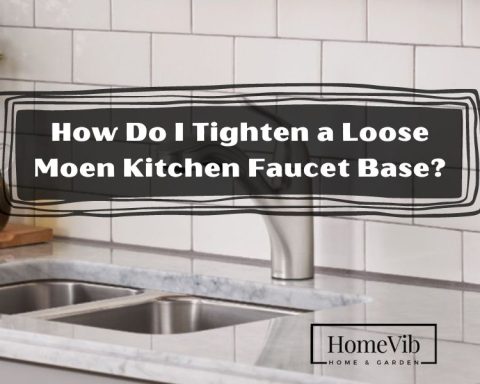A quartzite countertop is an attractive option for your kitchen. It can greatly improve the appearance of any space. It is also very versatile.
In fact, you can use it in many different styles and designs. Additionally, you can blend it well with almost any other material in your kitchen.
Currently, quartzite is one of the most popular countertops in the modern kitchen. It offers many benefits over other granite and quartz.
However, just because quartzite is a good material does not mean it’s the best. There are some factors you should consider before applying it.
So, let us identify its nature and characteristics. At the same time, let’s explore quartzite’s advantages and disadvantages.
Quartzite is an excellent material for kitchen countertops because of its aesthetic appeal. You can also rely on its durability, heat, and scratch resistance. Additionally, it is a beautiful, natural stone requiring less maintenance. Quartzite is both tougher and more long-lasting than granite.
In addition, it will not discolor from exposure to sunlight. For these reasons and more, quartzite stands out as a top option for stone countertops.
What Is a Quartzite Countertop?
Quartzite is a hard, non-layered metamorphic rock. It was initially a crystalline quartz (silica) sandstone.
Manufacturers produce quartzite upon subjecting sandstones to high temperatures and pressure. This is typically associated with tectonic compression inside orogenic belts. Also, 80-90% of quartz grains contain quartzite rock.
Quartz usually consists of trace amounts of other minerals. For example, Quartzite typically contains zircon and sometimes mica as well. Yet, quartz makes up the bulk of the material.
Sandstone is the parent rock of quartzite.
Sands are frequent sediments that comprise a major portion of the sedimentary package. These are usually formed from transported rock pieces from continental sources. Therefore, it contains a high percentage of quartz.
Generally, natural stone adds beauty and value to the property. Quartzite is a great natural stone option for kitchen countertops. With its firm surface and low care requirements, it gains its name over marble and granite.
Is Quartzite a Good Kitchen Countertop?
Due to its timeless beauty, quartzite makes a great choice for kitchen countertops.
Additionally, it is heat and scratch resistant, making it a reliable investment. Moreover, it’s a gorgeous natural stone that doesn’t need nearly as much care as other options. Quartzite is a much more durable and resilient material than granite.
Furthermore, it will not fade when exposed to sunshine. Quartzite is the best stone countertops for these and many other reasons.
As you can see, quartzite is one of the hardest rocks on earth and has a high chemical resistance. It is a mined stone with a high value and status, just like other natural stones.
Quartzite is resistant to heat, cold, bacteria, stains, and scratches. This is especially true when it has been adequately treated. In addition, individual particles of quartz recrystallize during the manufacturing process. As a result, it creates a lovely and decorative dazzling pattern.
For example, the Taj Mahal Quartzite is remarkable for its spectacular thunder effect. Architects and designers achieve this by contrasting a mild white background. Simultaneously, they blend it with light brown and golden veins of quartzites.
Quartzite is a durable, attractive option for countertops and other high-use spaces. This is due to its attractiveness, longevity, and ease of upkeep.
Quartzite Countertops Pros And Cons
Despite its many advantages, it may also have some drawbacks. Let us identify the pros and cons of quartzites as kitchen countertops.
Pros
Aesthetic Features
Its resemblance to marble is unquestionably the most enticing quality of quartzite. It’s a beautiful substitute for marble if you like the aesthetic appearance.
Variety of Color Scheme
Quartzite typically appears in shades of white and gray. It also produces colors like pink and red from iron oxide in the stone. Quartzite can also come in yellow, green, blue, and orange when other minerals are present.
Resistance
It is resistant to acids that could cause corrosion. It can also withstand the effects of ultraviolet light without becoming discolored.
Durability
Quartzite is much tougher than granite and quartz. Yet, it will not melt by heat, unlike resin-based quartz.
Easy to Maintain
Quartzites are easy to maintain. All you’ll need is some gentle dish soap and warm water. Thus, it would be best if you avoid harsh chemical cleaners.
Cons
Easy to Damage
You can damage your quartzite countertop with a knife. For example, using your countertop as a chopping board will cause scratches and marks.
Expensive
Like any other type of natural stone, they are quite pricey. In addition, Quartzite’s extreme hardness makes it challenging to work with. Thus, it necessitates using diamond cutters, which adds to the overall costs.
Not Suitable for DIY
Quartzites are unfit for do-it-yourself projects. This is due to its density and weight. Expert technicians with high-tech equipment are necessary for proper installation.
Necessary Sealing
To maintain cleanliness and prevent stains, you must apply sealing annually. However, as we recommend, you can do it more regularly.
Porous
Because of its porous nature, quartzite requires treatment to prevent water absorption. Permanent stains and bacteria can develop if they aren’t cleaned immediately.
What Is The Average Cost Of a Quartzite Countertop?
As of 2023, the average cost of quartzites at most stone yards ranges from around $65-$85 per square foot.
At the same time, prices vary from $100 to $200+ per square foot for more unusual alternatives.
A few examples of well-known quartzites are Classic White and Fantasy Brown quartzite. At the same time, there are White Macaubas and Taj Mahal quartzite. You can base the approximate price per square foot on an average project of 35 square feet.
Meanwhile, quartz countertops are less expensive than those made from quartzite. However, they might still be more costly than genuine stones.
Contrarily, quartzite is more expensive than quartz. When compared to marble and granite, quartzite tends to be more expensive too.
What Is The Best Quartzite Countertop?
Natural stone may quickly make a look more elegant in a room.
You can get a variety of quartzite thanks to its stunning patterns and colors. Here are some of the popular quartzite styles and designs.
- Taj Mahal Quartzite
- Princess White Quartzite
- Macaubus Fantasy Quartzite
- Dakar Quartzite
- Calacatta Lux Quartzite
- Dolce Vita Quartzite
- Allure Quartzite
Let’s take a look at each one and see what suits you.
Taj Mahal Quartzite
Taj Mahal quartzite is a natural quartzite because of its re-crystallized stones.
In fact, Taj Mahal slabs seem like marble but are as tough as granite. This makes it a big part of the stone’s appeal.
Rather than the flecked appearance of granite, the Taj Mahal has a smooth marbling effect. The stone has broad waves, swirls of color, and fascinating striations.
Princess White Quartzite
Currently, White Princess quartzite has become a popular material for kitchen countertops.
It is ideal for kitchen space due to its extreme durability. Nevertheless, you can also observe its crystal pieces and brittle nature.
Overall, Princess White quartzite makes any kitchen seem more like home. It is very apparent with its pure white background and shimmering quartz deposits.
Macaubus Fantasy Quartzite
Macaubas Fantasy Quartzite is a Brazilian natural stone. It has an attractive grey-white backdrop with brown and white patterns.
This stone is perfect to pair with any existing design due to its gentle movement of neutral shades. In addition, the gray and tan lines blend across a white background.
Consider a Macaubas Fantasy to blend with your kitchen countertop. This will match well as an indoor application.
Dakar Quartzite
Dakar Quartzite is a mixture of a pale silver base tone and subtle grey veins. Its fluidity evokes the impression of marble, making it a stylish addition to any room.
As you can see, Dakar Quartzite’s durability and low maintenance make it an excellent choice for countertops and other high-use areas.
This stone is a stunning quartzite with a flow of modern colors that you can apply to different settings.
Calacatta Lux Quartzite
In contrast to white quartzites, you can detect Calacatta Lux by its fine gray and beige veins.
This stone’s light, vivid color palette may make a room feel more airy and spacious. But, at the same time, it adds reflecting light to create a more soothing environment.
Above all, the veining patterns help impart a soft feeling of rhythm and movement.
Dolce Vita Quartzite
Dolce Vita Quartzite is a stone with tones of gray and peach across its white and creamy background.
These polished quartzite slabs are perfect for any indoor application. Thus, a particularly ideal choice as a kitchen countertop.
It has a yellow to orange base color with white, cream, gray, beige, and peachy tones in its veining. Nonetheless, it proves that you can easily pair it with cooler tones.
Allure Quartzite
Allure Quartzite is a grey variation of the quartzite family. The wave veins and muted blue-grey tones make for a beautiful, restful design.
You can apply Allure stone in any design, from the most classic to the most contemporary. As you can see, some slabs have black veining and movement.
However, this quartzite is too warm for white cabinetry, like the Taj Mahal. Thus, it is better suited to more neutral tones like greige.
Quartzite Countertop Upkeep And Maintenance
Quartzite countertops will retain their stunning appearance. However, this is only true for as long as you care for them properly.
Despite appearances, quartzite is not unbreakable. However, very little upkeep is necessary, and it is about as easy to maintain as granite.
As mentioned earlier, some types of quartzite are more porous than others. Here are some of the cleaning techniques that you can follow:
Cleaning Technique:
- Regularly wipe everything down with a damp cloth and mild detergent or soap. Verify if the soap bar contains no bleach and is gentle on the skin.
- Often, you can stain quartzite counters, but they won’t be permanently damaged. It can be stain-resistant for a certain amount of time. Yet it’s best to clean up any colored substances as soon as possible.
- Use a glass or surface cleaner on spots that have dried and become persistent. Use a sponge that won’t scratch your surfaces. For thorough cleaning, spray on a lot, let it stay for 10 minutes, and then wipe it down.
- Clean off grime, gum, and paint with a plastic putty knife or razor blade. Use a degreasing cleaner made explicitly for quartzite floors to eliminate grease. Rinse it off right away.
- Remove ink or permanent marker residue completely with an oil-based cleaner. After you remove the stains, quickly wash the area with warm water.
How Long Will Quartzite Last?
Generally, quartzite countertops can survive ten years long.
In fact, they could live even longer than you would expect in your home. This is because the natural materials utilized in their construction are nearly indestructible.
Quartzite rate number 7 on the Mohs scale. Therefore, it reflects the lengthy structural steps necessary for its formation.
In most cases, quartzite slabs are often harder than glass. Thus it is slightly more durable than granite and steel. If properly sealed with an impregnating sealer, quartzite can last forever.
Overall, the construction industry often uses quartzites in high-traffic and rough regions. Thus, maintaining their pristine appearance is easy even after years of constant use.
Does Quartzite Scratch Easily?
No, you cannot scratch quartzites easily. Because of their hard nature, it is resistant to scrapes and tears.
However, holes, chips, and cracks might also become noticeable over time. With incorrect cleaners and accidental damage, quartzite can lose its luster. As a result, it can become less than pleasing.
Generally, glass, ceramics, marble, and mild steel are all susceptible to
scratching. Thus, manufactured surfaces like quartzite and quartz
are prone to wear and tear.
When these sealants age and fracture, they can cause damage to the countertop. When that happens, quartzite’s porousness becomes a major disadvantage. At that point, you may see some tiny scratches here and there.
Simply put, it will be tougher once you seal your quartzite countertop. However, it will cause more harm to your cutlery than the knives and pans.
Thus, quartzite is substantially more fragile if you remove the seal.
Why Is My Quartzite Countertop Staining?
Due to its high porosity, the quartzite used for your countertop is easily stained.
Since it is porous, it absorbs liquids and then inevitably becomes stained. In some cases, this dirt is difficult to remove. Over time, it loses its shine since it can accumulate dirt and other residues.
Whether plastic or wax, it scratches in some way. As a result, it gradually wears away, exposing the stone beneath.
Consequently, there is no chance of staining to the quartzite while the sealer is still new. This is because the materials used to seal are easily washable and do not stain.
However, if the sealer is already worn down, the stain is more likely to penetrate the stone.
Can You Put Hot Pots On Quartzite?
No, you cannot directly put hot pots on quartzite since it is not heat resistant.
You should expect to see little blisters if you put a hot skillet directly onto a quartzite countertop. Although they may withstand brief periods of heat, they are rapidly burnt by hot cookware.
In most cases, this kind of damage is permanent. Also, quartzites might get scorched, damaged, or discolored if you use a toaster oven.
Quartz is heat-resistant, but the resin used to hold the material together can melt.
To be safe, it is best not to use quartz countertops in outdoor kitchens. This is because the resin fades when exposed to UV radiation.
Which Is Better Countertop, Quartz Or Quartzite?
When comparing quartz and quartzites, quartz countertops come out on top. It outperforms quartzite in both flexibility and durability.
Manufacturers produce quartz countertops from artificial stone. At the same time, quartzite countertops came from natural stone.
In terms of costs, quartzite is more expensive than quartz. However, Quartzite’s natural veining and patterns make it more scratch-resistant than quartz. Meanwhile, quartzite is preferable over quartz because of its increased resilience to heat.
On the other hand, quartz guarantees a considerably less stressful time.
Quartzite countertops have limitations in their capabilities. Therefore, quartz countertops have additional advantages that allow for this.
Which Is Better, Countertop, Granite Or Quartzite?
The durability and resilience of natural quartzite countertops outweigh those of granite.
While granite may withstand some heat, quartzite is a preferable choice. It is more desirable due to its lower upkeep and longer lifespan. However, granite is more popular due to its natural appearance.
In most cases, granite is more resistant to scratches and stains than quartzite. However, quartzite has higher etching resistance.
Quartzite has yet to quite catch up to granite in terms of price. To this day, granite remains more cost-effective than quartzite. Granite stones are also accessible to those on even the tightest of budgets.
Often, granite has been around longer than quartzites and comes in various colors. Unlike the widely varying tones of quartzite, these shades tend to be more uniform.
Above all, quartzite is a good choice for many different applications. This is because of how good it appears and how long it lasts.









